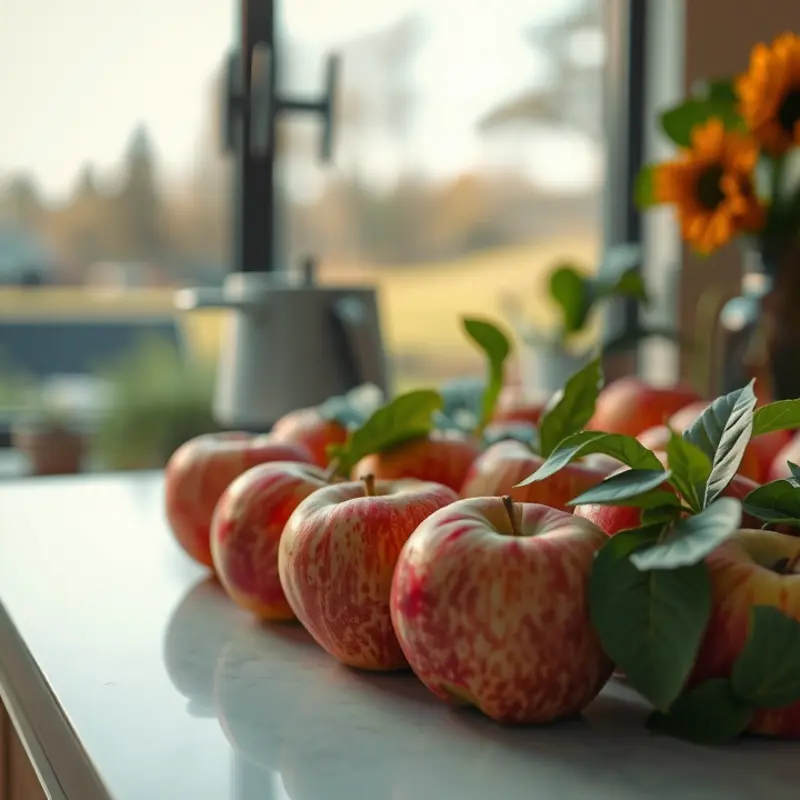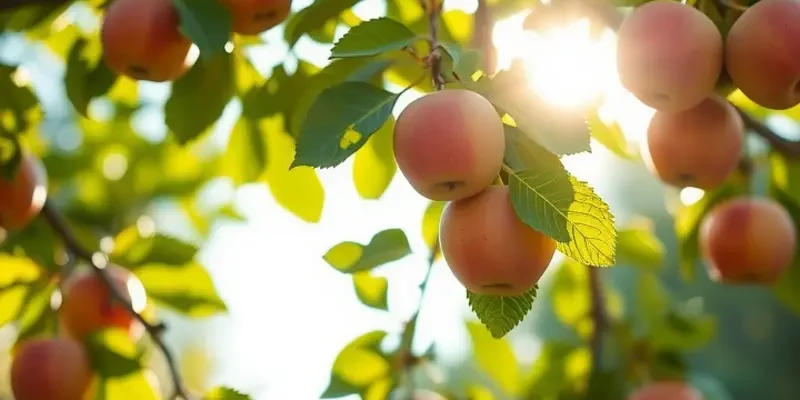Nobody likes a brown apple. Preventing browning is not only a matter of aesthetics; it also helps maintain the fresh taste and crisp texture we adore. This guide provides straightforward methods for all skill levels, ensuring your apples stay as delectable as ever. Whether you’re preparing a salad, serving snacks, or baking, these practical tips make apple preparation a breeze.
The Science Behind Apple Browning

Have you ever wondered why a freshly cut apple loses its appealing color and turns brown? This transformation results from a fascinating chemical process. When you slice into an apple, it exposes its cells to air, triggering an enzymatic reaction. This process is a primary cause of browning and can alter both the flavor and texture of your apples.
The crucial player in this reaction is an enzyme called polyphenol oxidase (PPO). Once the apple’s cells are exposed to oxygen, PPO catalyzes the oxidation of phenolic compounds present in the fruit to o-quinones. These o-quinones polymerize into melanin, which manifests as the brown coloration on the fruit’s surface. This browning not only affects the fruit’s appearance but also slightly alters its taste, sometimes leading to an astringent flavor.
The role of antioxidants in this process is also notable. These protective compounds naturally present in apples can slow browning by donating electrons to the oxygen radicals. However, once antioxidants are depleted, the enzymatic browning accelerates. That is why it is critical to act promptly if you want to keep your apples fresh and appetizing.
The texture of the apple also shifts. As the PPO activity continues, the cell walls may become compromised, resulting in a softer texture. This change is subtle but can alter your culinary experience, particularly if you savor the crispness of a freshly cut apple.
Taking steps to mitigate the browning can preserve both flavor and texture. One effective method is to reduce exposure to oxygen. This can be achieved by either submerging apple slices in water or covering them tightly with plastic wrap. Additionally, using acidic components like lemon juice can inhibit PPO activity by lowering the pH on the apple’s surface, thus slowing the browning process.
Another method, often overlooked, is to blanch the apples briefly. Blanching inactivates the PPO enzyme, though it might slightly alter the apple’s texture. This method, however, is beneficial if the apples are to be used in immediate cooking or baking.
For those interested in food storage and waste reduction strategies, understanding the browning process can be integral. By acting quickly, you not only keep the apples visually appealing but also minimize waste. Interested readers can explore more about reducing food waste and enhancing preservation in your kitchen by visiting our eco-smart kitchen storage.
By understanding the science behind why apples turn brown, you gain tools to manage this natural process effectively. You’ll no longer set aside brown apples, but act fast to enjoy them at their peak visual and taste appeal.
Top Techniques to Prevent Apple Browning

Nothing dampens the vibrant appeal of fresh apples quite like unsightly browning. This chapter delves into effective techniques to help you maintain the crisp and delicious appearance of your apples. Let’s explore how everyday pantry items and simple strategies can keep your apple slices looking fresh.
First, consider using lemon juice, a popular method thanks to its natural antioxidant properties. Cut your apple and immediately squeeze lemon juice over the slices. A light coating is enough to slow the oxidation process that causes browning. If you’re worried about the citrus taste, you can dilute the lemon juice with water prior to application.
Another household staple, vinegar, can also help keep your apples appealing. Mix one tablespoon of vinegar with a cup of water. Soak the apple slices for a few minutes, then rinse them. While the acidity in vinegar is beneficial, rinsing the apples can reduce any vinegar aftertaste that might linger.
For those seeking a sweeter method, carbonated soda might be an unexpected hero. The citric acid in soda acts similarly to lemon juice, preventing the apples from turning brown while imparting a slightly sweet flavor. Soaking apple slices in soda for five minutes can do the trick without any additional prep work.
Apple storage plays a crucial role in maintaining freshness. Store uncut apples in a cool, dry place. Refrigeration can extend their shelf life, but apples stored near other fruits, particularly bananas, can ripen and brown faster. The ethylene gas produced by bananas promotes ripening, so keep these fruits separate to ensure longevity.
For sliced apples, airtight containers can help. Place the slices in a container, minimizing air exposure. If that’s not possible, simply covering the slices with a damp paper towel before sealing the container can add a protective layer.
Understanding the importance of choosing methods that align with your culinary preferences is key. If you’re focused on reducing kitchen waste, see our insights on sustainable storage methods to complement your apple handling techniques.
Incorporating these simple yet effective strategies into your routine not only preserves the look of your apples but also enhances your enjoyment of this versatile fruit. These techniques are not only practical but allow you to savor apples just as nature intended—fresh and crisp.
Final words
Preventing apples from browning is a useful skill that enhances both the presentation and flavor of your dishes. Armed with simple techniques such as using lemon juice or vinegar, and knowing the science behind browning, you can enjoy fresh, appealing apples in various recipes. Remember, a little attention goes a long way in keeping your apples crisp and delicious, whether you’re snacking or cooking. Embrace these practices, and your culinary efforts will shine!







